Papers by Dr. Alok Abhishek
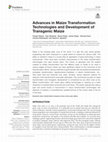
Frontiers in Plant Science, 2017
Maize is the principal grain crop of the world. It is also the crop where genetic engineering has... more Maize is the principal grain crop of the world. It is also the crop where genetic engineering has been employed to a great extent to improve its various traits. The ability to transform maize is a crucial step for application of gene technology in maize improvement. There have been constant improvements in the maize transformation technologies over past several years. The choice of genotype and the explant material to initiate transformation and the different types of media to be used in various stages of tissue culture can have significant impact on the outcomes of the transformation efforts. Various methods of gene transfer, like the particle bombardment, protoplast transformation, Agrobacterium-mediated, in planta transformation, etc., have been tried and improved over years. Similarly, various selection systems for retrieval of the transformants have been attempted. The commercial success of maize transformation and transgenic development is unmatched by any other crop so far. Maize transformation with newer gene editing technologies is opening up a fresh dimension in transformation protocols and work-flows. This review captures the various past and recent facets in improvement in maize transformation technologies and attempts to present a comprehensive updated picture of the current state of the art in this area.
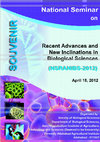
Development of particle bombardment transformation protocol is challenging in cereals crops espec... more Development of particle bombardment transformation protocol is challenging in cereals crops especially in tropical maize (zea mays L.) having very least established transformation and regeneration protocols. Maize immature embryos calli have been extensively used as ideal plant transient expression systems. Intact maize cells were bombarded with microprojectiles bearing plasmid DNA coding for selectable (conferring resistance to herbicide Basta [Bar]) and reporter (β,l-glucuronidase [GUS]) marker genes. In our study, to standardize the acceleration pressure, Distance of the target Tissue, and Number of shots per plate for standardization of above parameters 50 embryos for each parameters with three replicates bombardments with the construct pDM803 was used. We observed during this standardization 1100 psi of acceleration pressure at 6 cm target tissue distance with two time shots showed the high level of transient gus expression. The transformed immature embryos had shown strong pos...
In order to select the best maize genotype for gene transformation studies, In vitro regeneration... more In order to select the best maize genotype for gene transformation studies, In vitro regeneration frequency of immature and mature of ten elite inbred maize lines (Zea mays.L) was investigated on a regeneration medium supplemented with 1mg/l BAP and 0.5mg/l indole-3-acetic acid. Significant differences in regeneration capacity between genotypes expressed as frequency of regeneration, average number of callus, and type II embryogenic calli were observed. Regeneration in 10 genotypes of maize using immature embryo explant was achieved. The regeneration capacity was strongly influenced by the genotypes. The highest regeneration capacity was observed in genotype CM-300,HKI 1105 (12.5 and 12.2 % respectively)
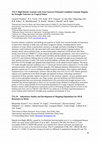
Extreme climatic conditions and shifting rain patterns in South Asia warrant broader incorporatio... more Extreme climatic conditions and shifting rain patterns in South Asia warrant broader incorporation of innovative solutions to help cope with these exogenous threats, including abiotic stress resilience in crops. Maize is particularly sensitive to drought and hence breeding for drought tolerance could minimize the risk associated with maize-based rainfed cropping systems. To identify abiotic stress-resilient traits, an association panel comprised of 430 diverse elite lines, mostly sourced from CIMMYT's Asian tropical and subtropical germplasm, were test-crossed to a set of three testers (CML451, CML474 and CL02450) and the hybrids were evaluated for grain yield (GY) and Anthesis-Silking Interval (ASI) under six managed drought-stress treatments and nine optimal locations in India. The study found heritability estimates that ranged from 0.4 to 0.9 and 0.6 to 0.9 for drought and optimal trials respectively, in the multi-location analysis. The mean GY under drought-stressed conditions was 1.3 tonnes per hectare (t/ha) compared to 5.9 t/ha under optimal locations. Mixed model GWAS using the 55K Infinium platform identified five common genomic regions for GY across multiple-drought locations and testers; these regions individually explained up to 15% of phenotypic variance with an effect size of 0.2 to 0.5 t/ha. Fifteen genomic regions were significant across both drought and optimal locations, indicating constitutive expression of these genomic regions irrespective of the moisture regimes. Several candidate genes such as triose-phosphate transporter, zinc finger protein, glycosyl hydrolase and DUF250 domain containing proteins that were previously demonstrated to be associated with drought tolerance were identified and tolerant haplotypes in these loci are currently being validated in independent association panels as well as using multiple diverse bi-parental populations in a range of genetic backgrounds. Besides, marker-aided introgression experiments aimed at developing drought tolerant versions of the leading tester lines such as CML451 and CML472 are underway to facilitate rapid development of stress resilient maize hybrids for drought prone marginal environments in Asia.
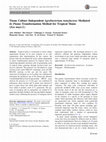
Proceedings of the National Academy of Sciences, India Section B: Biological Sciences, 2014
ABSTRACT Tropical maize is recalcitrant to tissue culture regeneration because of its poor respon... more ABSTRACT Tropical maize is recalcitrant to tissue culture regeneration because of its poor response to in vitro regeneration after transformation. In this context, the present study has developed the tissue culture independent in planta transformation protocol for tropical maize by transferring plumular meristem cells of germinating seeds of tropical maize genotype through Agrobacterium tumefaciens infection. The protocol was developed by using Agrobacterium strain EHA105 containing vector pCAMBIA3301 carrying cry1Ab, gus and bar genes. The expression of transgene gus in T0 plants was confirmed by measuring the hydrolysis rate of the fluorescent substrate 4-methylumbelliferyl-beta-D-glucuronide (MUG) assay whereas the presence of cry1Ab gene was confirmed by polymerase chain reaction and T0 plants were allowed to grow in glass house into whole plant until maturity and were selfed to produce seeds of T1 generation. The presence of transgene and its segregation was studied in T1 generation through Southern and enzyme-linked immunosorbent assay confirming the presence of transgene and its expression respectively. The developed protocol is cost-effective, efficient and genotype independent without involvement of any tissue culture procedure and can generate a relatively large number of transgenic plants in approximately 75–90 days.
Indian Journal of Genetics and Plant Breeding (The), 2014
The study was undertaken to elucidate the effect of genotypes and age of immature embryo on callu... more The study was undertaken to elucidate the effect of genotypes and age of immature embryo on callus induction, embryogenic type II calli production and regeneration from immature maize embryos. The immature embryos were excised from a selfed ear of ten elite Indian maize inbred lines on 6, 12 and 18 days after pollination. The mean callus induction, embryogenic type II calli production, and regeneration was highest across all the genotypes in 12 days old immature embryos and were 44.25, 26.12, and 11.20 per cent respectively. The significant differences were observed with respect to callus induction, embryogenic type II calli production and regeneration capacity between genotypes. The highest regeneration capacity was observed by immature embryo at 12 days after pollination (DAP) of genotype HKI1105 and CM300.
Teaching Documents by Dr. Alok Abhishek
Books by Dr. Alok Abhishek







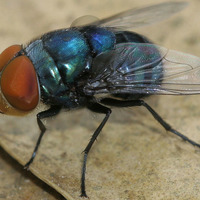



Uploads
Papers by Dr. Alok Abhishek
Teaching Documents by Dr. Alok Abhishek
Books by Dr. Alok Abhishek